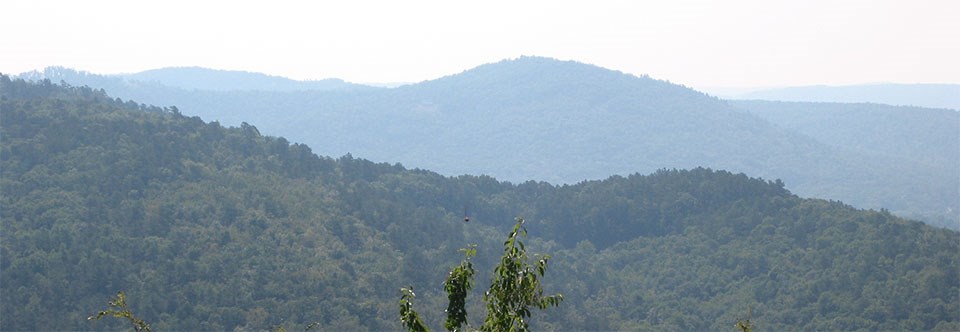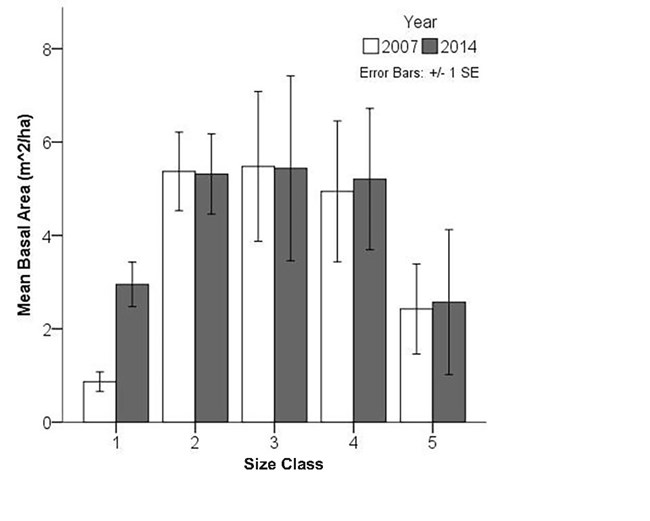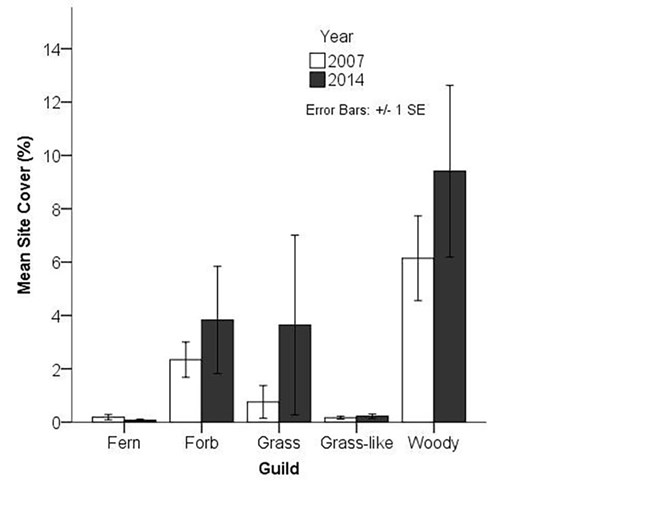Last updated: October 8, 2020
Article
Vegetation Community Monitoring at Hot Springs National Park

NPS-Photo
Scientists began measuring plants at Hot Springs National Park in 2007. Seven permanent locations are deployed to observe woodland plants over time. Scientists use these data to describe and detect changes in the forest.

Diameter at breast height (cm) size class ranges for overstory trees.
Class 1 = 5-15 cm, 2 = 15-25 cm, 3 = 25-35 cm, 4 = 35-45cm, 5 = 45+cm
NPS

NPS
View the Full Report. (pdf)
Learn more about the Heartland Inventory & Monitoring Network.
Data in this report were collected and analyzed using methods based on established, peer-reviewed protocols and were analyzed and interpreted within the guidelines of the protocols.
Learn more about the Heartland Inventory & Monitoring Network.
Data in this report were collected and analyzed using methods based on established, peer-reviewed protocols and were analyzed and interpreted within the guidelines of the protocols.
